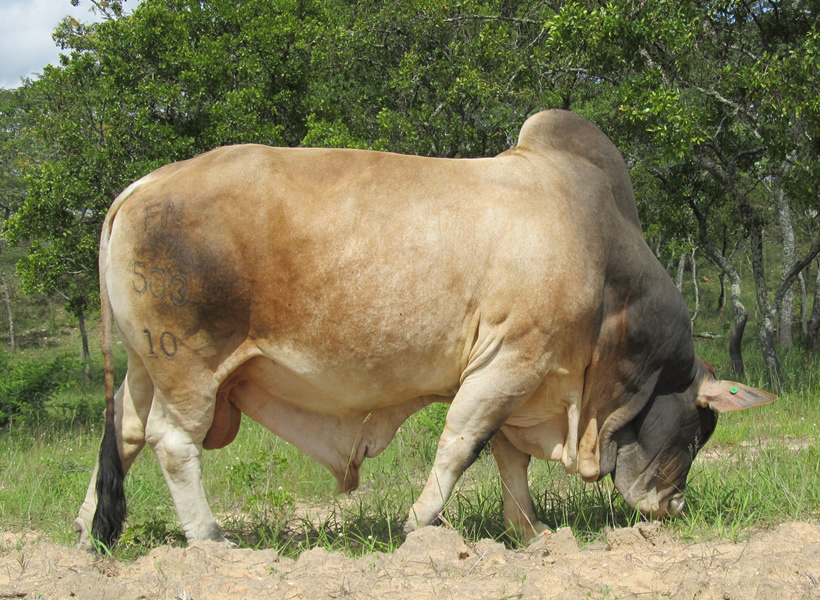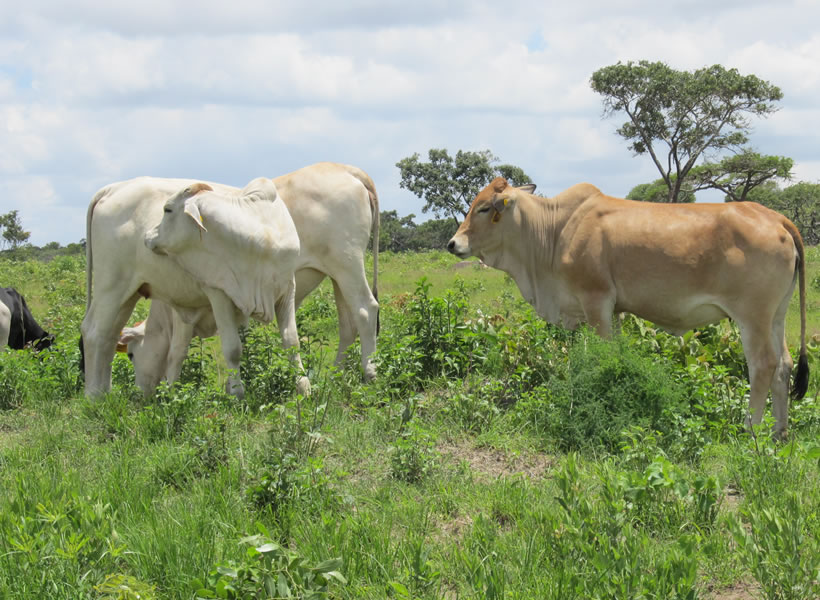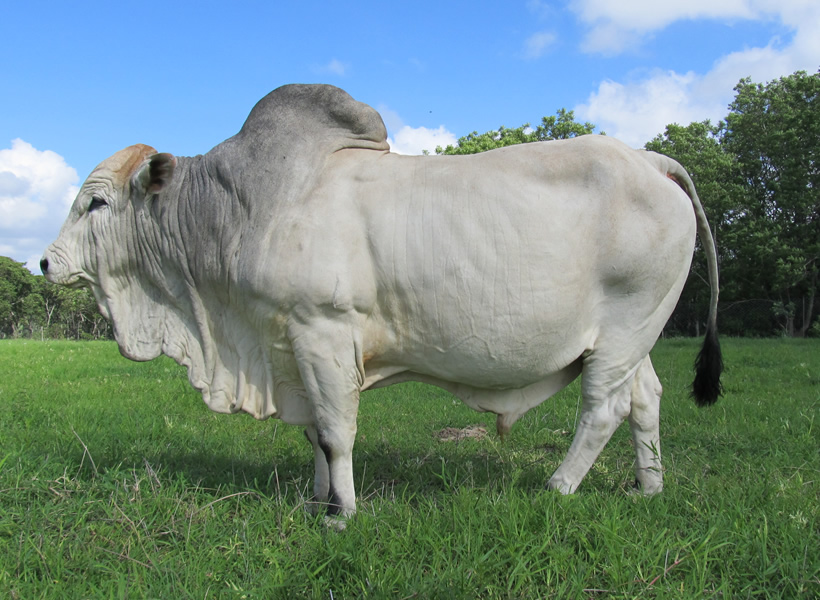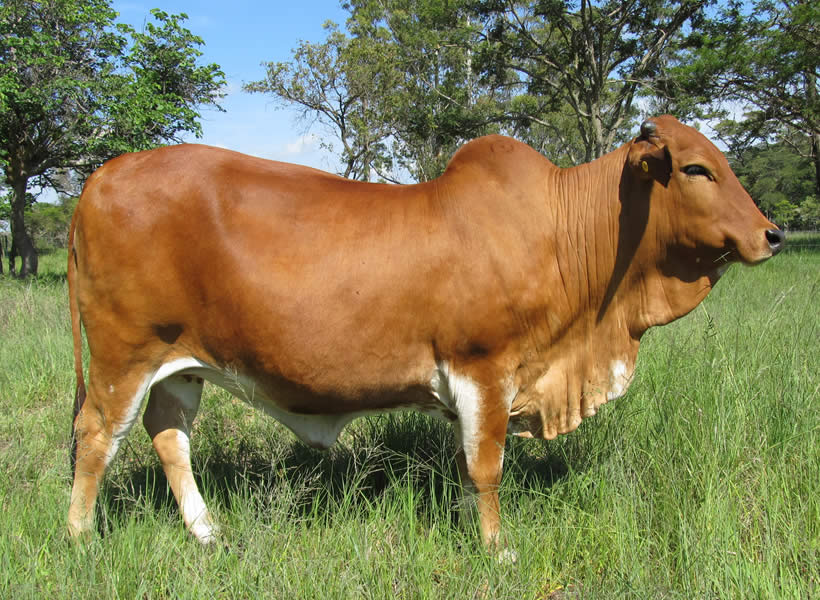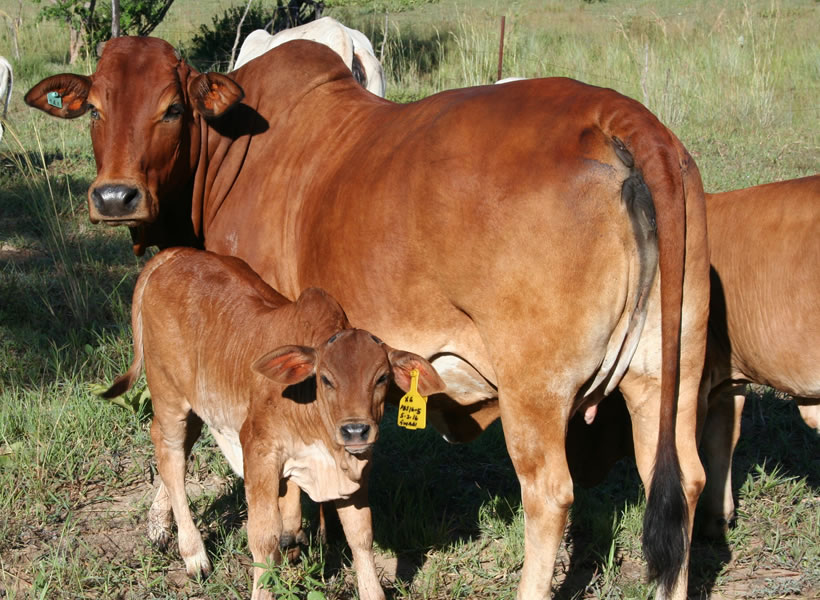Why The Boran?
Breed Description
The Boran breed developed after the introduction of Bos Indicus cattle to Africa after the Arab invasion of East Africa in about 700 AD. The breed gets its name from the Borana plateau in Southern Ethiopia, a region with harsh high altitude climatic conditions and frequent drought. Its composition is 24% European Bos Taurus, 65% Bos Indicus and 12% Africa Bos Taurus.
Advantages
- Produces high quality meat with low input costs
- High resistance to ticks, biting insects and disease
- Very strong herd instinct
- Greater hybrid vigour in cross-breeding programmes
Background
The Boran breed developed after the introduction of Bos Indicus cattle to Africa after the Arab invasion of East Africa in about 700 AD. The breed gets its name from the Borana plateau in Southern Ethiopia, a region with harsh high altitude climatic conditions and frequent drought. Its composition is 24% European Bos Taurus, 65% Bos Indicus and 12% Africa Bos Taurus. Boran are humped medium-framed animals with sound muscling and large capacity for size. They are beefier than other indigenous breeds like the Nguni and Afrikaner and are able to store energy in the form of fat, which stands them in good stead during droughts and other challenging climatic conditions. The Boran is resilient to African conditions and ideally suited for producing high quality meat with low input costs, a crucial attribute in the production of organic grass-fed beef. It can be successfully fattened off the veld thanks to its tremendous rumen capacity, ease of movement over harsh territory and browsing ability. They are not picky eaters and can happily graze on sour veld and fynbosveld that is usually unacceptable to other breeds.
The Boran is the mothering cow of Africa
- Boran cows have very good udders with well-formed teats.
- They produce enough milk to wean calves that weigh more than 50% of dams weight at weaning.
- Their good mothering instinct provides a deterrent against predators.
- Borans have an excellent survival rate of calves.
- Cows produce small calves at birth, male calves average 28kg and female calves average 25kg. Calving problems hardly exist.
- Boran cows have very good udders with well-formed teats.
- They produce enough milk to wean calves that weigh more than 50% of dams weight at weaning.
- Their good mothering instinct provides a deterrent against predators.
- Borans have an excellent survival rate of calves.
- Cows produce small calves at birth, male calves average 28kg and female calves average 25kg. Calving problems hardly exist.
Longetivity
- It is quite normal for a 15-year –old cow to be sound mouthed healthy and fertile.
- It is also on record that a 16 year old Boran bull is still producing high quality semen for artificial insemination.
Fertility
- It is acknowledged that the greatest attribute of the Boran is its fertility.
- Even under harsh conditions the Boran cow will continue to breed and rear calves and do this without punishing herself.
- One explanation for this high fertility is that the cow has relatively low body weight loss over the suckling period, thereby maintaining a good condition, thus able to conceive again.
Disease Resistance
- A loose but very motile skin with a very short covering of hair and a high secretion of an oily substance makes the Boran a less desirable host for ticks and flies.
- Thick eye banks with very long eyelashes and a long tail with a big well-formed twitch all protect this indigenousness breed against insects.
Temperament
- Boran cattle are recognized as being generally, quiet, docile and easy to handle. This trait has developed over many generations of cattle living close to man.
Carcass Quality
- Trials in Nebraska, U.S.A, show that the Boran and its crosses score consistently better than other Zebu Breeds for meat tenderness, carcass marbling and rib eye area..
The Herd Instinct
- The very strong herd instinct of the Boran makes it easy to manage in bush country.
- It makes it almost impossible to steel a single animal out of a herd.
Good Converter Of Roughage Into Good Quality Beef
- The unique tremendous rumen capacity of the Boran as can be seen in its exceptional depth of body allows the breed to be successfully fattened of the veld with no energy supplement
- The Boran is also a good browser and under difficult circumstances it has the ability to stay in a good condition.
- Well adapted to environment and climate.
- Having sound legs with good walking ability allows the Boran cover great distances in search of food and water.
- Being a good grazer and browser allows the Boran to make use of all vegetation at its disposal.
- Its short shiny summer coat and its excellent heat tolerance allow it to out perform other breeds in hot humid climates.
- It also however has the unique ability to withstand extremely cold and wet conditions as during winter it is protected by an excessively thick loose skin and a covering of very dense oily hair that is shed with the commencement of summer.
Early Maturing
- Boran heifers reach puberty at an average age of 385 days.
- Well adapted to environment and climate.
- Having sound legs with good walking ability allows the Boran cover great distances in search of food and water
- Being a good grazer and browser allows the Boran to make use of all vegetation at its disposal.
- Its short shiny summer coat and its excellent heat tolerance allow it to out perform other breeds in hot humid climates.
- It also however has the unique ability to withstand extremely cold and wet conditions as during winter it is protected by an excessively thick loose skin and a covering of very dense oily hair that is shed with the commencement of summer.

